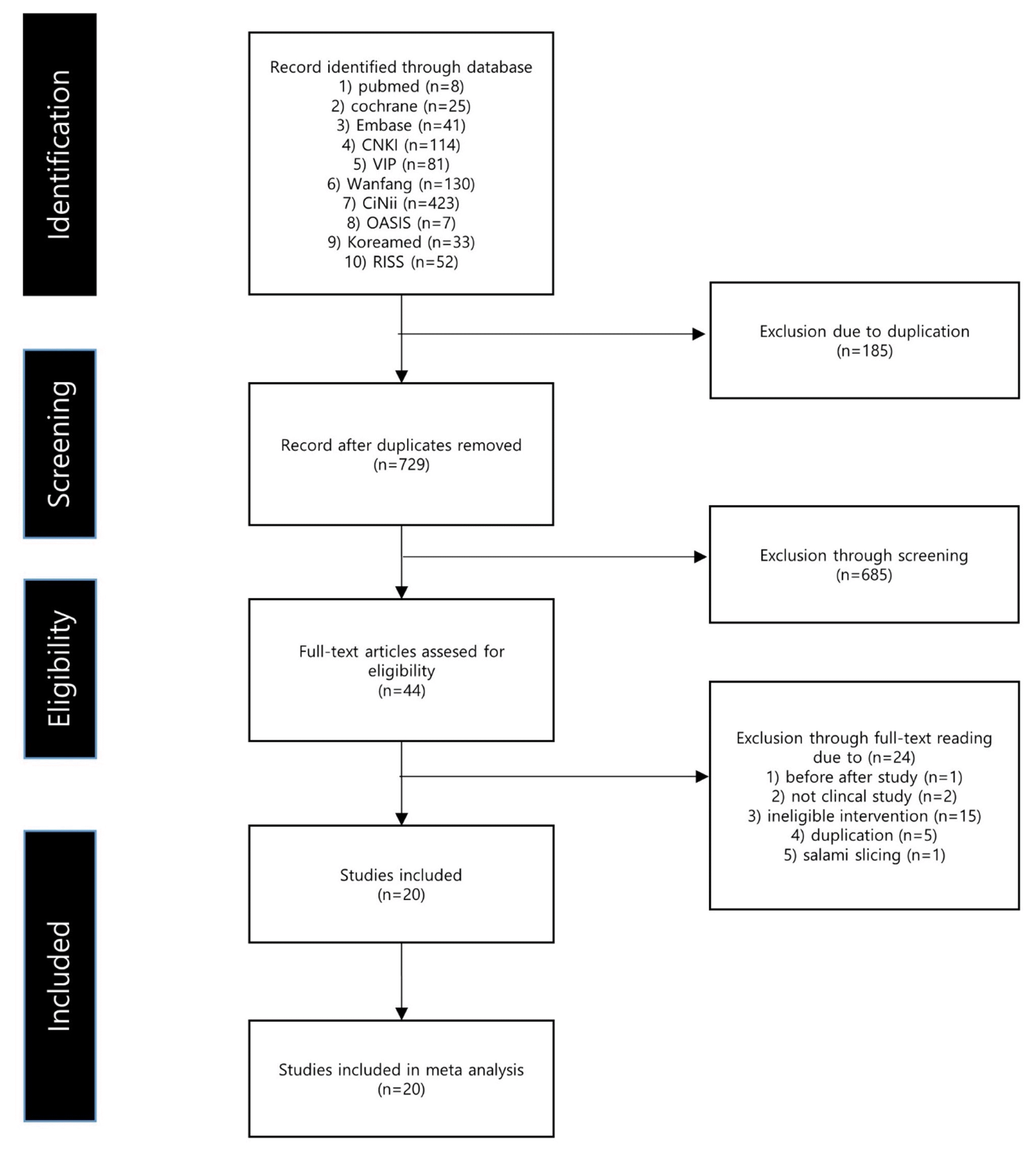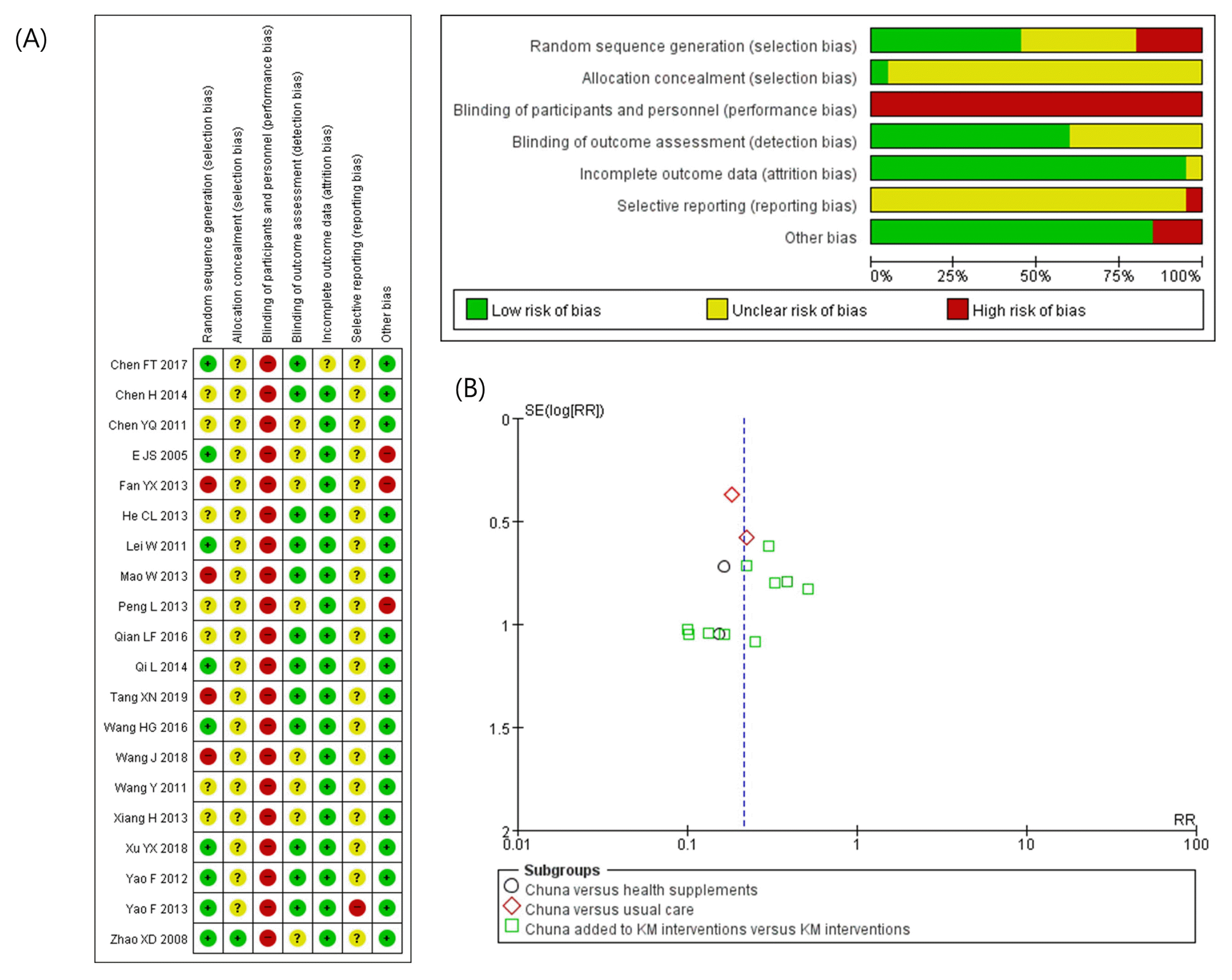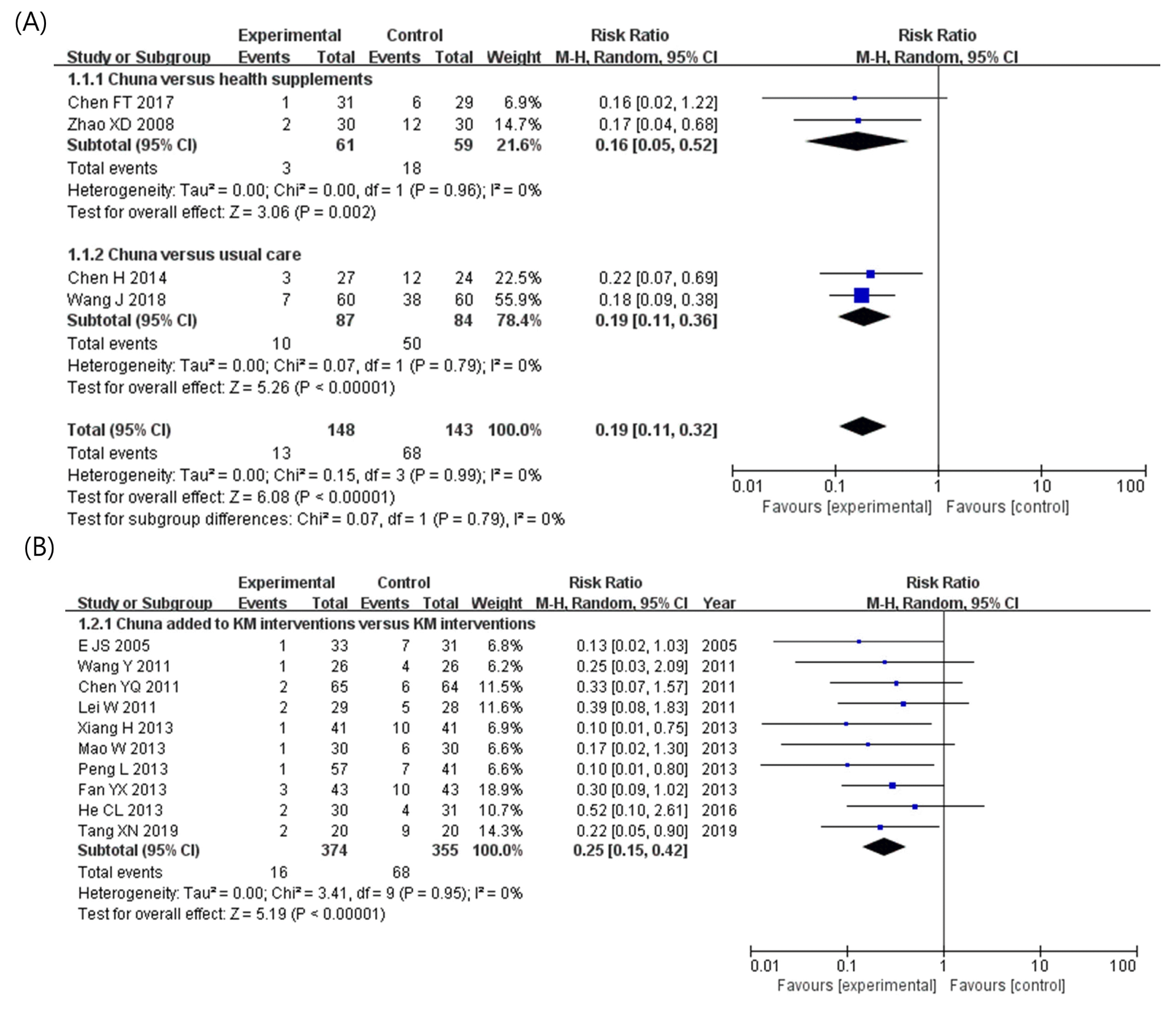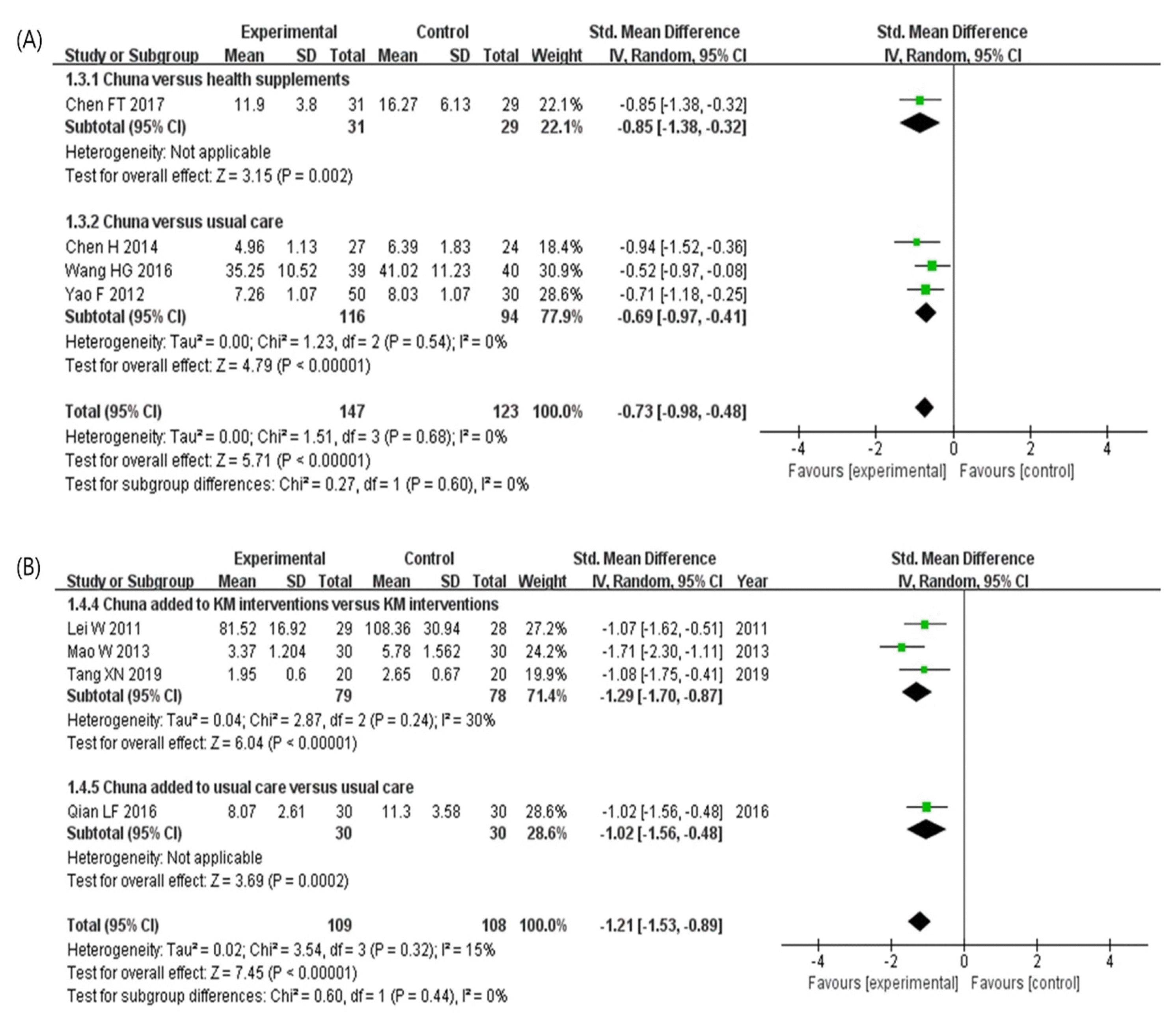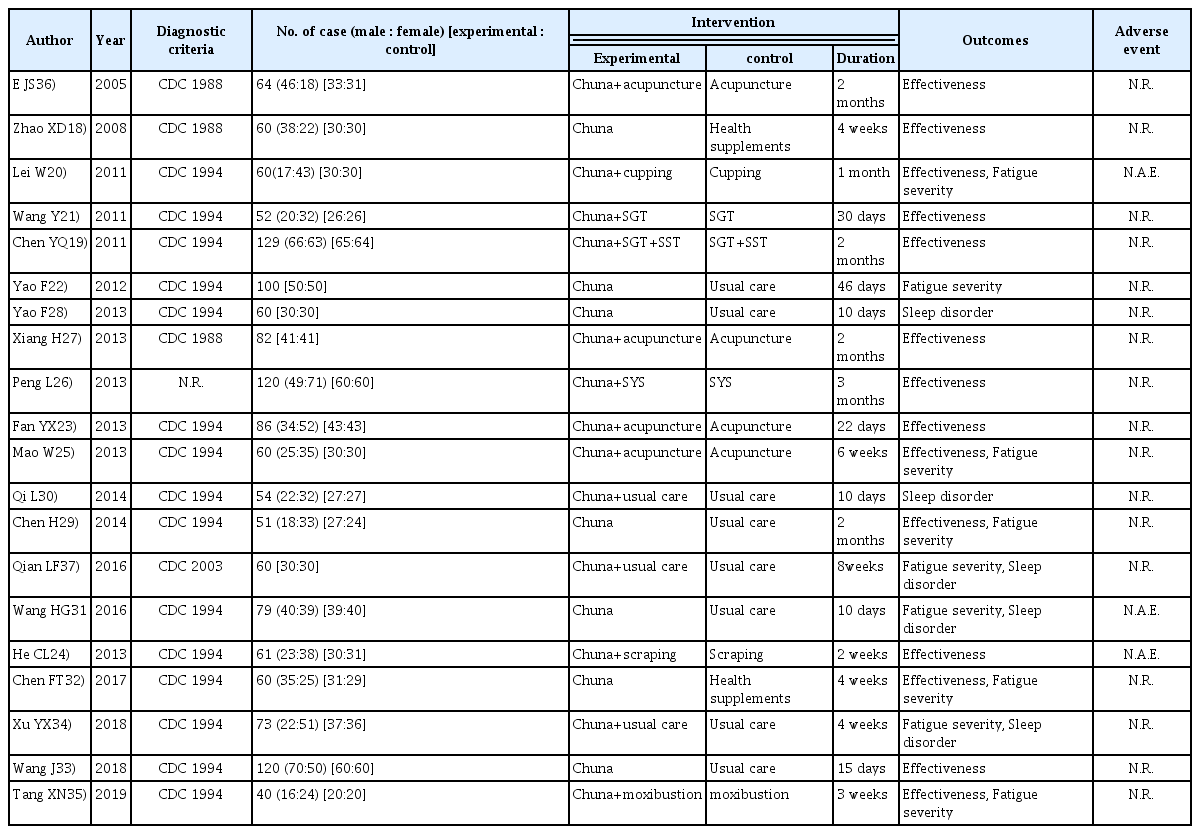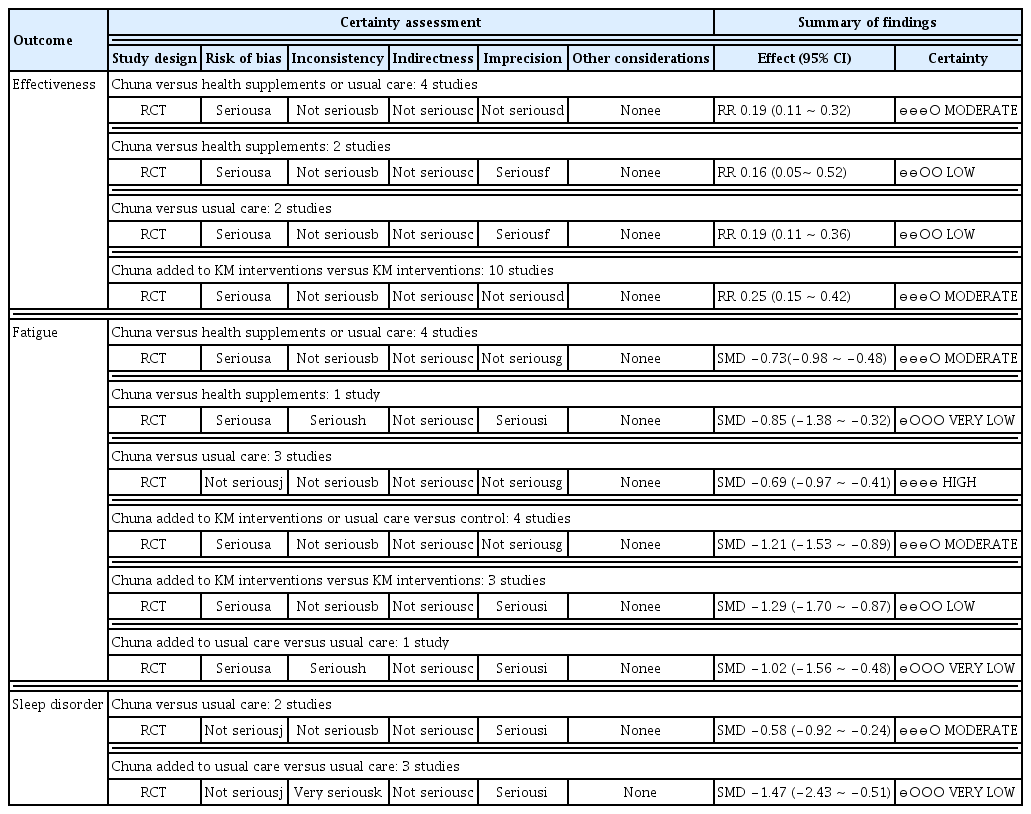References
1. Fukuda K, Straus SE, Hickie I, Sharpe MC, Psych M, Dobbins JG. Chronic fatigue syndrome: a working case definition. Ann Intern Med Ann Intern Med 1994;121(12):953–9.
2. Holmes GP, Kaplan JE, Gantz NM, Komaroff AL, Schonberger LB, Straus SE. Chronic fatigue syndrome: a working case definition. Annals of Internal Medicine 1988;108(3):387–9.
3. Gundro BK, Sporstøl FM, Larun L, Flottorp S, Malterud K. Case definitions for chronic fatigue syndrome/myalgic encephalomyelitis (CFS/ME): a systematic review. BMJ Open 2014;:4.
4. Son CG. Review of the prevalence of chronic fatigue worldwide. The Journal of Korean Oriental Medicine 2012;33(2):25–33.
5. Lim EJ, Ahn YC, Jang ES, Lee SW, Sh L, Son CG. Systematic review and meta-analysis of the prevalence of chronic fatigue syndrome/myalgic encephalomyelitis (CFS/ME). Journal of Translational Medicine 2020;18(100)
6. Kim CH, Shin HC, Won CW. Prevalence of chronic fatigue and chronic fatigue syndrome in Korea: community-based primary care study. The Korean Academy of Medical Sciences 2005;20:529–34.
7. Tomas C, Newton J, Watson S. A review of hypothalamic-pituitary-adrenal axis function in chronic fatigue syndrome. ISRN Neuroscience 2013;:1–8.
8. Hvidberg MF, Brinth LS, Olesen Av, Petersen KD, Ehlers L. The health-related quality of life for patients with myalgic encephalomyelitis/chronic fatigue syndrome (ME/CFS). PLoS ONE 2015;10(7):e013242-e.
9. Castro-Marrero J, Faro M, Zaragozá MC, Aliste L, de Sevilla TF, Alegre J. Unemployment and work disability in individuals with chronic fatigue syndrome/myalgic encephalomyelitis: a community-based cross-sectional study from Spain. BMC Public Health 2019;19(1):840-.
11. Alraek TJ, Lee MS, Choi TY, Cao HJ, Liu JP. Complementary and alternative medicine for patients with chronic fatigue syndrome: a systematic review. BMC Complementary and Alternative Medicine 2011;11(1):87.
12. Kim Hj, Byun DY, Gb K, Park J, Kwon YS, Yu JE. The statistics study on patients visiting a Korean medicine hospital according to the application of chuna therapy health insurance and medical benefits. Journal of Korean Medicine 2019;40(3):188–97.
13. Kim JW, Kim HJ, Jang ES, Jung H, Hwang MW, Nam DH. Survey on pattern identification and treatment of chronic fatigue in Korea medicine. Journal of Physiology & Pathology in Korean Medicine 2018;32(2):126–33.
14. Nam D. The effectiveness of Bojungikgi-tang and its modification on chronic fatigue syndrome: a systematic review and meta-analysis. Journal of Korean Medicine 2020;41(1):91–106.
15. Higgins J, Green S. Cochrane handbook for systematic reviews of interventions Version 5.1.0 2011;
16. Kim SY, Park JE, Seo HJ, Jang BH, Son HJ, Suh HS, et al. NECA’s guidance for undertaking systematic reviews and meta-analyses for intervention National Evidence-based Healthcare Collaborating Agency; 2011.
17. Guyatt GH, Oxman AD, Vist GE, Kunz R, Falck-Ytter Y, Alonso-Coello P. GRADE: an emerging consensus on rating quality of evidence and strength of recommendations. BMJ 2008;:924–6.
18. Zhao XD. Clinical evaluation of 60 cases of chronic fatigue syndrome treated by massage. Chinese medicine modern distance education of China 2008;6(12):1494–5.
19. Chen YQ, Yang GY, Lai YL, Yang SY. Treatment of 65 cases of chronic fatigue syndrome of spleen deficiency and liver depression by massage and Chinese medicine. Journal of Fujian University of TCM 2011;21(3):62–3.
20. WL . Massage plus cupping on the clinical efficacy and plasma tryptophan in patients with chronic fatigue syndrome. Hunan University of Chinese Medicine; 2011. Master’s thesis
21. Wang Y. Shujin decoction with manipulation therapy for chronic fatigue syndrome. Journal of Liaoning University of TCM 2011;13(10):220–1.
22. Yao F, Fang M, Zhu GF, Jiang SY, Ji Q. Channel points massage’s effects on FS-14 and FAI evaluation for chronic fatigue syndrome. Journal of Nanjing University of TCM 2012;28(3):12–30.
23. Fan YX, Yan PF, Wu W. Clinical observation on 86 cases of fatigue syndrome treated by acupuncture and massage. Journal of Ningxia Medical University 2013;35(9):1057–9.
24. He CL. Clinical study of four-step spinal massage and scraping therapy for chronic fatigue syndrome. Guiyang University of Traditional Chinese Medicine; 2013. Master’s thesis
25. Mao W. Clinical observation on treatment of chronic fatigue syndrome typed liver stagnation and spleen deficiency by acupuncture combined with massage. Hubei University of Chinese Medicine; 2013. Master’s thesis
26. Peng L. Clinical observation on traditional Chinese medicine massage and serving xiaoyaosan modified formula for chronic fatigue syndrome. Chinese and Foreign Medical Research 2013;11(28):172–3.
27. Xiang H. Efficacy observation of acupuncture and massage on treating chronic fatigue syndrome. Clinical Journal of Chinese Medicine 2013;5(4):39–40.
28. Yao F, Fang M, Jiang S, Zhu Q, Liu K. Clinical effect observation of Chinese meridian point tuina on the sleep quality of chronic fatigue syndrome. China Journal of Traditional Chinese Medicine and Pharmacy 2013;28(2):559–61.
29. Chen H, Li W, Peng L, Liu XW, Wang DJ, Yang Z. Regulatory effects of health massage based on bladder meridian and gall bladder meridian points on chronic fatigue syndrome. Yunnan Journal of Traditional Chinese Medicine and Materia Medica 2014;35(6):62–3.
30. Qi L. Effect of acupoint massage on sleep quality in patients with chronic fatigue syndrome. Especially Healthy 2014;1(1):41–2.
31. Wang HG. Acupoint massage on sleep quality of patients with chronic fatigue syndrome. Chinese Archives of Traditional Chinese Medicine 2016;34(9):2298–301.
32. Chen FT. Clinical study on chronic fatigue syndrome treated with tuina of dredging meridian and regulating five-organs. Changchun University of Traditional Chinese Medicine; 2017. Master’s thesis
33. Wang J, Wang L. Effect of massage on chronic fatigue syndrome. World Latest Medicine Information 2018;18(59):135.
34. Xu YX. Back shu points combined with head acupoint massage in the treatment of chronic fatigue syndrome. Journal of Zhejiang University of Traditional Chinese Medicine and Pharmacy 2018;42(6):491–3.
35. Tang XN, Liu JH, Wei GK, Han J, Xu ZW, Zhang XY. Observation on dffect of Wei’s manipulation combined with tianjiu therapy on CFS patients. Liaoning Journal of Traditional Chinese Medicine 2019;46(2):325–7.
36. EJS , Wen BL. Observation on therapeutic effect of acupuncture and massage on chronic fatigue syndrome. Chinese Archives of Traditional Chinese Medicine 2005;23(2):349–64.
37. Qian LF, Yao Q, Zhu GF. Effect of channel points massage combined with yijing exercising on chronic fatigue syndrome with sleep disorder. Chinese Journal of General Practice 2016;14(11):1886–8.
38. Tang H, Wang X, Lu D, Lei L, He Y, Pang J. Systematic review of chronic fatigue syndrome treated by tuina. Chinese Archives of Traditional Chinese Medicine 2018;36(6):1363–7.
39. Zheng YY. Guiding principles for clinical research of new drugs in traditional Chinese medicine Beijing: China Medical Science and Technology Press; 2002.
40. Adams D, Wu T, Yang X, Tai S, Vohra S. WITHDRAWN: Traditional Chinese medicinal herbs for the treatment of idiopathic chronic fatigue and chronic fatigue syndrome. Cochrane Database Syst Rev 2018;10(10):CD006348-CD.

